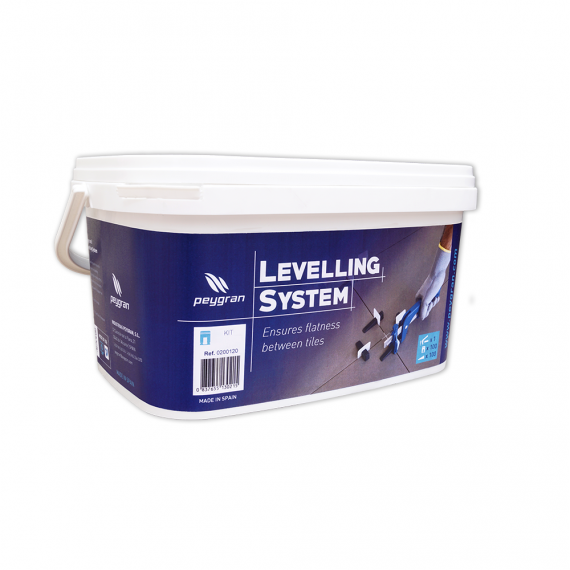
Tile Lippage: Prevention Tips, Tile Leveling Systems and Tools
Tile lippage is probably one of the most annoying things that can happen to any professional tile installer. It can not only ruin an entire job, but it can also become a safety hazard, jeopardizing the integrity of the work and the safety of the end user. The most common reason tile lippage occurs is when an installer, especially a DIYer, doesn’t use a proper tile leveling system. Most tilers tend to focus on the spacing between tiles and won’t pay attention to tile lippage. This can not only look bad but can also become a tripping hazard when occurring on a floor.
In this article, we reveal what tile lippage is and ways to prevent it from happening.
What Is Tile Lippage?
Tile lippage is the vertical displacement between the edges of two adjoining tiles. In other words, it’s when one tile’s edge is sticking upwards at a greater height than the tile next to it.
It looks bad, especially when it occurs in a flooring installation. When tile lippage occurs, it will become almost immediately and unavoidably noticeable when looking at the finished product. But that might be the least of your worries.
When tile lippage occurs, the raised tile edges can crack or even be broken off if, for example, the wheel of a cart catches it. Even more concerning is that it can become a tripping hazard, especially for the elderly or if someone is using assistance like crutches, a cane, or a walker.
Acceptable Lippage in Tile Installations
Sometimes, there are circumstances where tile lippage is unavoidable and, therefore, there are industry standards to use as guidelines for acceptable lippage and excessive lippage.
The American National Standards Institute (ANSI) A108.02-2013, General Requirements: Materials, Environmental, and Workmanship, Section 4.3.7 (“Lippage−Guidelines, Explanation, and Caution”) explains what can be considered an acceptable amount of tile lippage and what is considered to be an excessive amount of tile lippage. For example, for grout joints that are less than 6 mm wide, the allowable lippage is 1 mm plus the inherent tile warpage.
For grout joints 6 mm or wider, this becomes 2 mm plus the warpage. While this acceptable for ceramic tiles, if using natural stone tiles, the requirements change.
In the Marble Institute of America’s (MIA) Dimension Stone Design Manual (7.2 edition) “Horizontal Surfaces/General Notes,” Section 4.0−Lippage, it states that lippage should be limited to 1 mm for natural stone tile installations.
Using Tile Leveling Systems to Prevent Lippage
Tile lippage is preventable provided that you use the right tile leveling systems. The key is to start with a flat surface. However, even with a flat and even floor, you can still see lippage occur. This is usually because the tiles have been manufactured with some slight irregularities of thickness. This is common in the manufacturing process and can be corrected with a tile leveling system.
A tile leveling system consists of three components. These are strips, caps, and pliers.
Strips are designed to reduce the warpage of a tile to the minimum allowable for grout joints.
Caps apply pressure to the tiles evenly over the surface vertically so that there is limited to virtually no height variations between the tiles.
Pliers provide that pressure to the tile caps to ensure even distribution and a level surface.
How to Prevent Lippage when Laying Large Floor Tiles
When installing larger floor tiles, you might need to take the following into account to help prevent lippage.
Chamfered edges can help prevent lippage, especially for large tile installations. A chamfered edge uses beveling to allow tiles to be placed together in a smoother transition as opposed to regular sharper edges that could be more prone to lippage.
Make sure that your surface is level. Using a tile leveling system is the best way to ensure the flattest surface and prevent tile lippage.
Make sure that your thinset adhesive or mastic is evenly applied using a trowel. Make sure to achieve even coating by spreading the adhesive both vertically and horizontally and that the entire surface is fully coated. Using too much can create an uneven service, which can further increase the chances of lippage.
Even though thin grout lines look more attractive, they can accentuate lippage. Make sure your grout lines are no less than 3/32 inches.
Use Tile Leveling Systems from Centura Tools to Prevent Lippage
If you’re in the process completing a tile installation project, it is important to do your research and get expert advice from other installation professionals. Centura Tools carries only the best tile leveling systems including leveling systems from Raimondi, Peygran, and Rubi. Whether it’s spacers, caps, pliers, clips, or full levelling system starter kits, Centura Tools can help you prevent lippage on your next tiling job.
If you have questions about the different tile leveling systems and accessories, just ask one of our staff members, who are all professionals in the tile installation and construction industries. We have a wealth of knowledge to share!
We stand out from our competitors because we source our products from around the world to ensure our customers are getting the best international brands. Products from Germany, Spain, Italy, Japan, and the U.S. fill our shelves, and we pride ourselves on offering the best prices and products on the global market.
For more about our tile leveling systems and supplies,contact us at (416) 785-3311 or visit our store to see our amazing products.